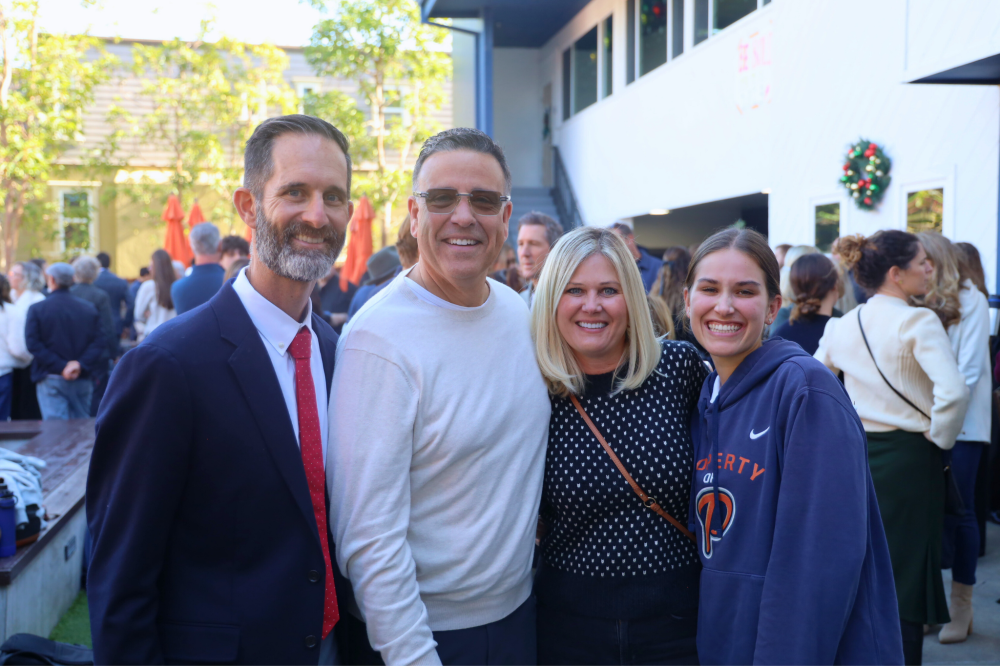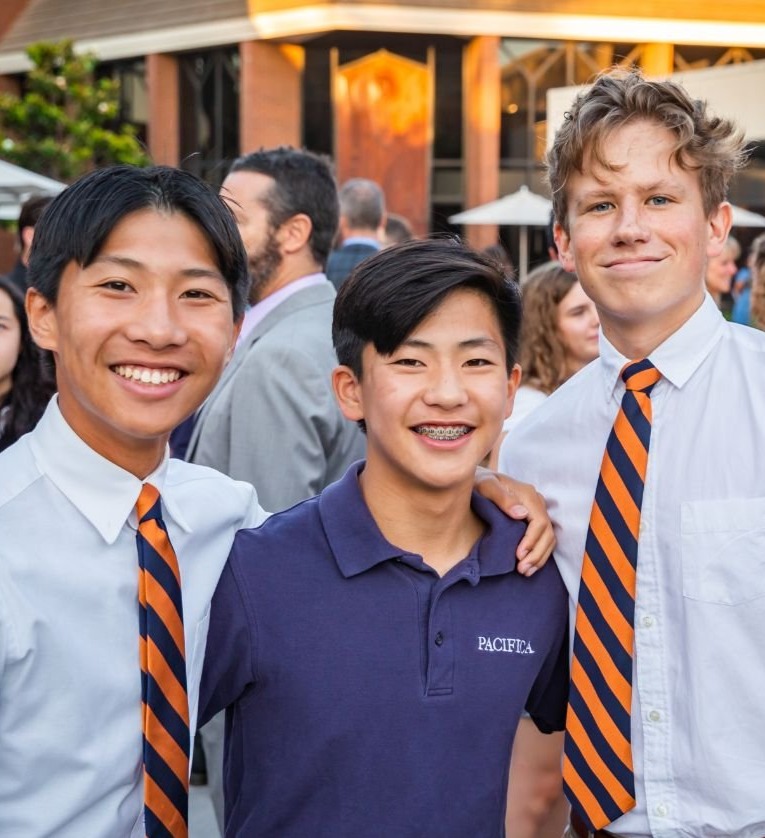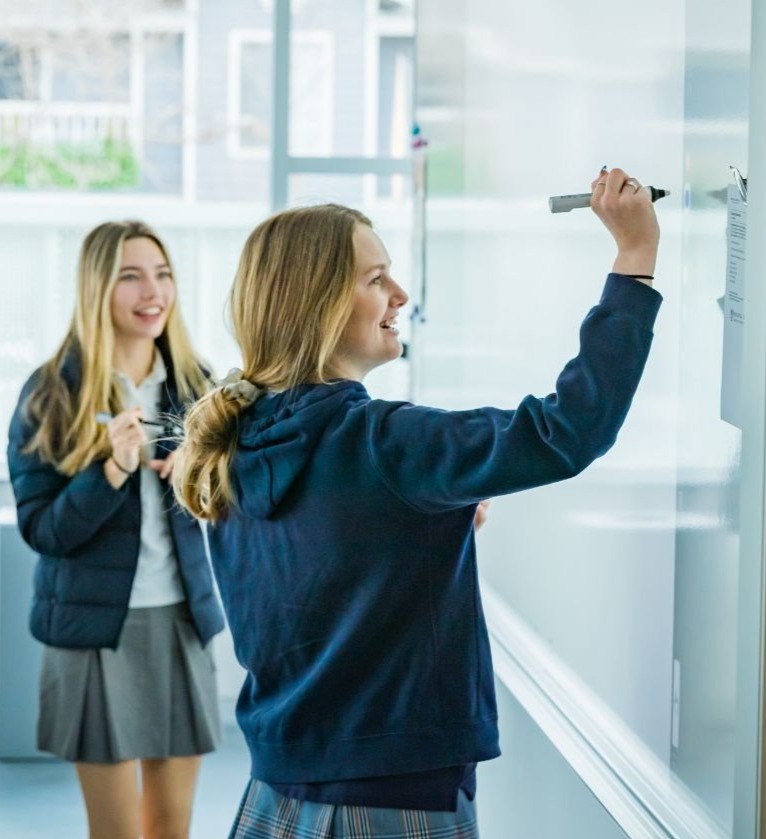Working with Families for Student Formation
February 15th, 2024
Working with Families for Student Formation
By: Dr. Ben Roberson
“Family, church, and school are the three basic people-forming institutions, and it is no wonder that they produce the best results when they cooperate.” - Pat Fagan, Faculty Member and Writer for the Acton Institute
Distinction between Pacifica and other high schools
Pacifica takes a fundamentally different approach to forming students than most schools across the country.
For many other schools, the primary focus is on the interaction between students and teachers; parents are often left out of the conversation. In some cases, public school districts are now creating a separation from families by setting policies that limit or prohibit information sharing between students and their parents. Pacifica takes the opposite approach.
For Pacifica, families are the foundation of a student’s growth, and parents are recognized as the primary educators—the first school—and the most influential people in their lives.
And, as described by Pat Fagan, we see the partnership with parents as the best way to form a student.
Foundation of Our Relationship with Parents
Our relationship with parents is necessarily predicated on two common goals we have with each parent:
First, we both desire our students to think and live well. Parents at Pacifica choose to drive by schools that are closer to their homes and far cheaper in order that their students would grow to be men and women who can think well in order that they would live a more virtuous and loving life, and ultimately, have more joy.
Second, our relationships with parents are predicated on the fact that a connected influence will be the strongest way for the student to choose the good, especially when given personal freedom.
This relationship with parents—tied by a shared vision for the student—works well because the student is best formed when students are educated within the context of the family in close collaboration with the school.
The Current State of Families
Two things are true at the same time; first, families choose Pacifica because they want to partner with a school that is forming students to seek virtue; a school that is leading their children to seek the Good, True, and Beautiful. And, at the same time, the current state of home culture in Orange County, and across the country, is often in tough shape. Families are often too busy, distracted, and over-scheduled.
While these two statements sound contradictory, they are both true.
Educators' Role in Formation
Our role as a school is to confirm the good that parents desire for their children. Our families are raising their children intentionally, that is why they are sending their students to Pacifica.
They need a place for their children to go where other adults share that vision. A shared and long-term vision for their sons to grow into the type of men that they want their daughters to marry; and a school for their daughters to grow into the type of women they want their sons to marry. We want our sons and daughters to think – “it’s not only my parents who think this is the best way to live.”
Another way to describe our role at Pacifica is to train our students to see goodness and beauty. This is not done by any particular program, but instead through the formational process of passing on a culture to students. As Chesterton put it, “Education is not a subject and does not deal in subjects. It is instead a transfer of a way of life.”
There are three primary ways culture is passed to our students at Pacifica.
First, culture is passed through planned and direct means. This happens face-to-face in the classroom as well as in our traditions. This includes our curriculum and instruction as well as our Dedication Service, All-School Retreat, Commencement Ceremony, and more.
Second, it is passed through unplanned and direct ways. These are the spontaneous interactions teachers have with students outside the classroom. This might look like calling a student by name or asking a student about something they know is happening in their life. This can only happen if we know your students.
Third, it happens through indirect means. This includes what our school looks like as a visual representation of what we value. For example, Pacifica’s Harkness Tables display a value for conversation, the Great Books in the floor-to-ceiling bookshelves show our value for ideas and stories, and the art in each classroom on our 15th St. Campus along with the intentional orientation of Main Campus classrooms towards the sweeping ocean views reveal our high value of beauty.
Culture is transmitted best one soul and one student at a time. Yet, we cannot do it alone.
Working with Families Is Not a Program, It’s a Culture
So, how do we bridge the gap between school and home? The bridge between the school and the home is not through a program, a set of policies or processes, or even revamping Back-to-School Night. It is about our culture. It is about our entire disposition and intentionality.
Our disposition includes the way we talk, greet, email, and generally engage. We intentionally engage with parents because we have a shared objective—the formation of their child.
So, as a school, Pacifica has dedicated itself to setting a culture where we are shoulder-to-shoulder with families for the formation of their children towards maturity and goodness.








.jpg?v=1677078481949)


_-2.jpg?v=1677078725816)
.jpg?v=1677078837139)
